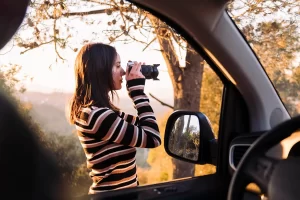Our art choices are deeply influenced by psychology. Personal experiences and cultural backgrounds shape our preferences, guiding us towards more satisfying selections. Colors trigger specific emotions – red ignites passion, while blue instills calmness. Art styles evoke diverse responses – non-representational art fuels creativity, while naturalism provides familiarity. In the digital era, virtual galleries redefine how we choose art, offering immersive experiences. By applying psychological principles, art selection becomes a refined process, enhancing our viewing experiences. Delve into the psychology of art selection to discover truly resonant pieces.
Key Takeaways
- Personal experiences and cultural backgrounds shape art preferences.
- Colors evoke specific emotions, influencing art selection.
- Art styles impact mood and perception differently.
- Digital age offers new dimensions in virtual art selection.
- Applying psychology enhances meaningful art curation.
Understanding Art Preferences
The psychology of art selection reveals that understanding art preferences is a complex yet intriguing aspect of human behavior that delves into the detailed interplay of individual perceptions and emotions towards artistic expressions. Art preferences are shaped by personal experiences, cultural backgrounds, and societal influences, creating a unique tapestry of choices that reflect one’s identity and values. Recognizing these elaborate dynamics can lead to more meaningful and satisfying art selections.
Influence of Color and Emotions
Exploring the intersection of shade and emotions in art selection unveils a profound connection between visual stimuli and psychological responses, shedding light on the complex ways in which tints can evoke and influence our emotional experiences. Colors can provoke specific feelings; for example, warm tones like red may evoke passion or anger, while cool tones like blue can induce calmness or sadness. Understanding these associations aids in selecting art that resonates emotionally.
Psychological Impact of Art Styles
Delving into the domain of art styles unveils profound insights into their psychological impact on viewers. Different styles evoke diverse emotions and responses, influencing the viewer’s mood and perception. For instance, non-representational art may spark creativity and introspection, while naturalism can evoke a sense of familiarity and comfort. Understanding these psychological effects can aid individuals select art pieces that resonate with their emotions and enrich their living or working spaces.
Digital Age: Virtual Art Selection
In exploring the realm of art styles and their psychological impacts, a substantial shift arises when considering art selection in the digital age, particularly in the virtual realm. The digital era offers a wide array of virtual art galleries, online platforms, and enhance reality experiences, revolutionizing how individuals engage with and select art. This shift introduces new dimensions to the art selection process, providing unprecedented access and immersive experiences.
Applying Psychology in Art Curation
Applying psychological principles to the selection of art offers a refined understanding of how individuals engage with and interpret artistic expressions, shaping a more enriched and meaningful experience within the domain of art selection.
- Emotional Impact: Art choices can evoke various emotions, influencing preferences.
- Cognitive Processes: Understanding how the mind processes art aids in curation.
- Personal Connection: Art that resonates personally can enrich the viewing experience.
Frequently Asked Questions
How Can Cultural Background Influence Art Preferences?
Cultural background significantly shapes art preferences by influencing individuals’ values, beliefs, and experiences. Exposure to various art forms and traditions can enrich appreciation and understanding, creating a distinctive lens through which people interpret and connect with artworks.
Are There Specific Colors That Are Universally Associated With Certain Emotions?
Certain hues have universal emotional associations. For example, red often signifies passion or danger, while blue is commonly linked to calmness or sadness. Understanding these hue-emotion connections can help in selecting art that resonates with viewers on a deeper level.
Can Different Art Styles Have Varying Psychological Effects on Individuals?
Different art styles can truly have varying psychological effects on individuals. For example, abstract art may evoke feelings of ambiguity and intrigue, while realistic art could instill a sense of familiarity and comfort. Art selection should align with desired emotional responses.
What Are the Benefits and Drawbacks of Selecting Art in a Virtual Setting?
Selecting art in a virtual setting offers convenience, a wide array of choices, and the ability to visualize the art in different environments. Nevertheless, drawbacks include potential inaccuracies in color representation and the inability to feel the texture physically.
How Can Psychological Principles Be Applied in the Curation of Art Collections?
Psychological principles can enrich art arrangement by taking into account emotional reactions, cultural importance, and personal preferences. Understanding cognitive biases, color psychology, and aesthetic attractiveness can lead the choice of art collections that connect with viewers on a deeper level.
Conclusion
In summary, the psychology of art selection offers valuable insights into our preferences, emotions, and cognitive processes when choosing artwork. By understanding the influence of color, emotions, and art styles, individuals can make more enlightened choices in the digital age. Applying psychological principles in art curation can enrich the quality of selections, nurturing deeper connections with the chosen pieces. Ultimately, utilizing these insights can lead to a more enriching and meaningful experience within the realm of art.
Also read: Artistic Harmony of Essential Oil Candles in Photography


